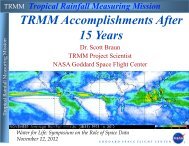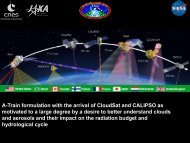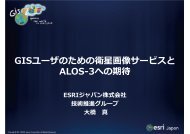ALOS Data Users Handbook
ALOS Data Users Handbook
ALOS Data Users Handbook
Create successful ePaper yourself
Turn your PDF publications into a flip-book with our unique Google optimized e-Paper software.
Section 3 Outline of <strong>ALOS</strong> Satellite System3.3.7 Reaction Control Subsystem (RCS)<strong>ALOS</strong>'s reaction control subsystem (RCS) has thrusters (gas jet modules) as the actuators for controlling thesatellite's attitude and orbit after <strong>ALOS</strong> - H-IIA separation. Two types of thrusters are assembled on <strong>ALOS</strong>'s RCSaccording to its role.1[N] (about 100g) thrusters are used for attitude control. There are two sets of 1[N] thrusters (16 thrusters total)and another one set is on standby in the case of emergency. For orbit control, four 4[N] (about 400g) thrustersare used. They are organized for two pairs and <strong>ALOS</strong> can control its orbit another pair of 4[N] or 1[N] thrustersin the case of emergency.<strong>ALOS</strong>'s RCS uses hydrazine as the fuel. In vacuum, fuel and oxidizer are needed for combustion. But hydrazinecombust with catalyzer dissocciating and generating hot gas without oxidizer. Hydrazine is widely used forsatellite's fuel because of simplicity of thrusters and components.<strong>ALOS</strong> has three tanks and total capacity of them is over 180kg. This capacity is enough for five years operationof <strong>ALOS</strong>'s attitude and orbit control.3.4 Mission Instrument Observation <strong>Data</strong>3.4.1 PRISM <strong>Data</strong> FormatPRISM has six CCDs for the nadir telescope, and eight CCDs both for the forward and for the backwardrespectively, with each CCD consisting of 5,000 pixels arrayed in the cross track direction. In the normalobservation mode with 35km width, 14,592-pixel image data are output from each telescope from the presetextraction position incorporating correction of effects from the pointing angle and earth rotation, and29184-pixel data are output for the nadir 70km observation mode as well. The output data are divided into threesystems of 4,864 pixels (6 systems for the nadir 70km mode), and each data set is irreversibly compressed at theDC subsystem. The compressed data are assigned a VCID for each system and packetized, and then transmittedto ground. Figure 3.4-1 shows the observation data interface of PRISM.Where, the data interfaces for Calibration Mode 1 and Calibration Mode 2 are the same as that of ObservationMode 1.AUX data [status, high frequency angle sensor data (ADS data), imaging start time (line counter and GPS time)]3-28


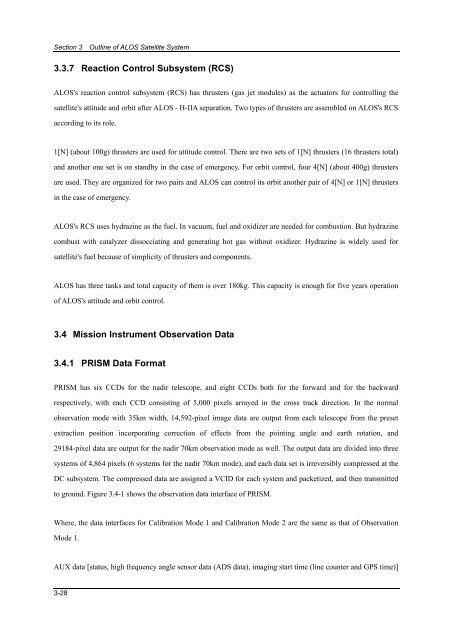
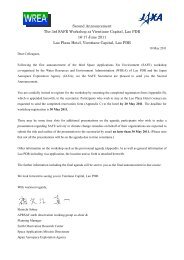
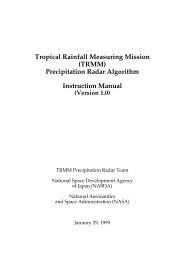

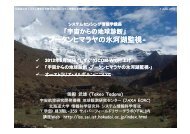
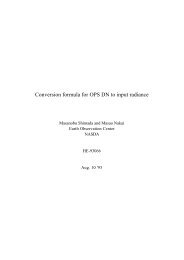
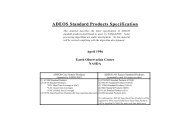
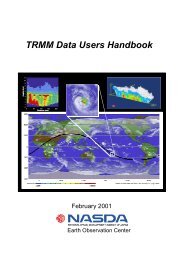
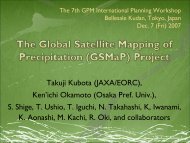
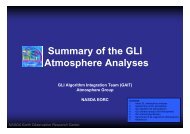
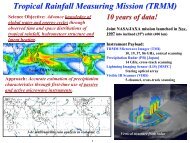
![4.12.2a_Tibet_Wu Guoxiong Tibet-CEOP.ppt[]](https://img.yumpu.com/35802437/1/190x135/4122a-tibet-wu-guoxiong-tibet-ceopppt.jpg?quality=85)
